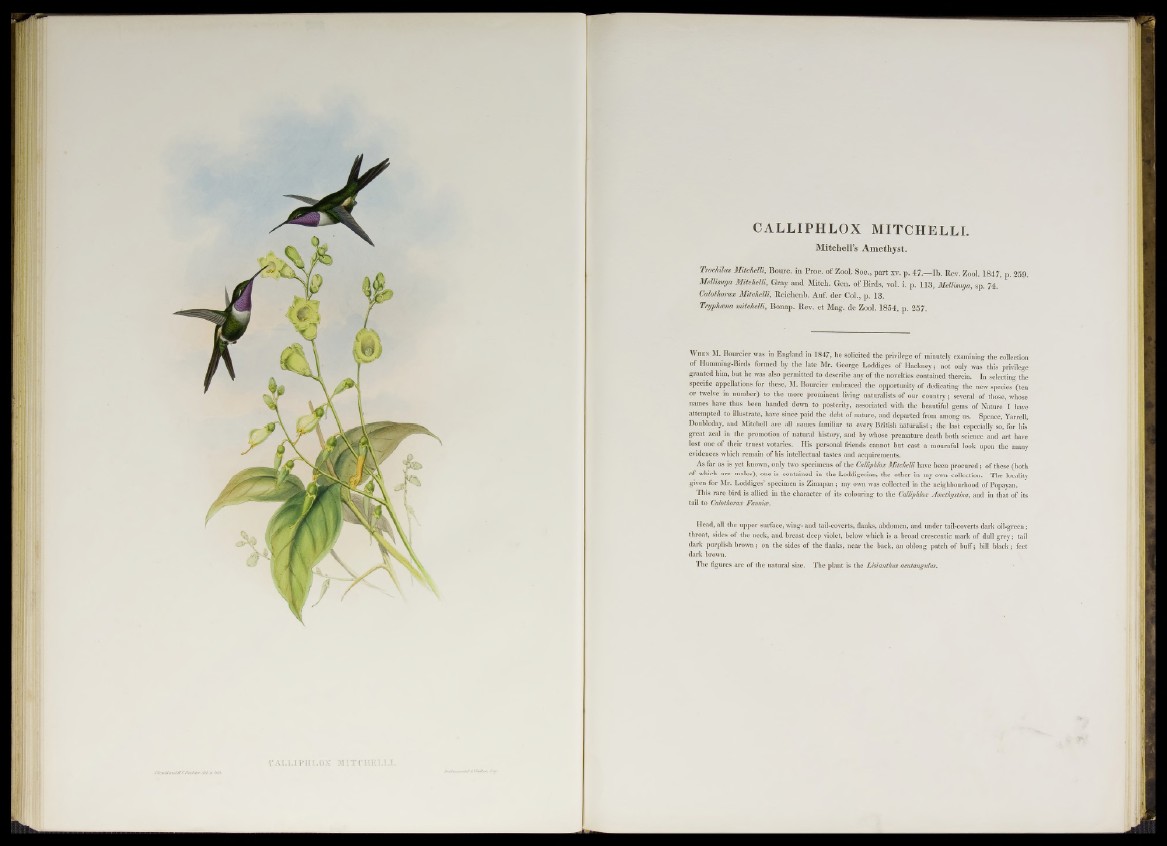
CALLIPHLOX MITCHELLI.
Mitchell’s Amethyst.
Trochilm M itcM li, Bourc. in Proc. o f Zool. Soc., part xv. p. 47.—Ib. Rev. Zool. 1847, p. 259.
Mellisuga M itcM li, Gray and Mitch. Gen. o f Birds, vol. i. p. 113, Mellimga, sp. 74.
Calothorax M itcM li, Reichenb. Auf. der Col., p. 13.
Tryphana m itcM li, Bonap. Rev. et Mag. de Zool. 1854, p. 257.
W h e n M. Bourcier was in England in 1 8 4 7 , he solicited the privilege of minutely examining the collection
of Humming-Birds formed by the late Mr. George Loddiges of Hackney; not only was this privilege
granted him, but he was also permitted to describe any of the novelties contained therein. In selecting the
specific appellations for these, M. Bourcier embraced the opportunity of dedicating the new species (ten
or twelve in number) to the more prominent living naturalists of our country; several of those, whose
names have thus been handed down to posterity, associated with the beautiful gems of Nature I have
attempted to illustrate, have since paid the debt of nature, and departed from among us. Spence, Yarrell,
Doubleday, and Mitchell are all names familiar to every British naturalist; the last especially so, for his
great zeal in the promotion of natural history, and by whose premature death both science and art have
lost one of their truest votaries. His personal friends cannot but cast a mournful look upon the many
evidences which remain of his intellectual tastes and acquirements.
As far as is yet known, only two specimens of the CalliphloxMitchelli have been procured; of these (both
of which are males), one is contained in the Loddigesian, the other in my own collection. The locality
given for Mr. Loddiges’ specimen is Zimapan; my own was collected in the neighbourhood of Popayan.
This rare bird is allied in the character of its colouring to the Calliphlox Amethystina, and in that of its
tail to Calothorax Fannies.
Head, all the upper surface, wing- and tail-coverts, flanks, abdomen, and under tail-coverts dark oil-green;
throat, sides of the neck, and breast deep violet, below which is a broad crescentic mark of dull grey; tail
dark purplish brown; on the sides of the flanks, near the back, an oblong patch of buff; bill black; feet
dark brown.
The figures are of the natural size. The plant is the Lisianthus acutangulus.